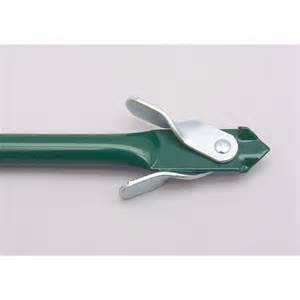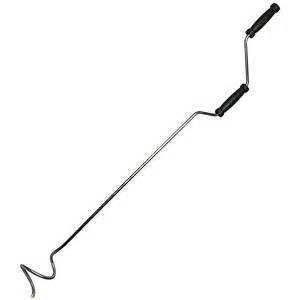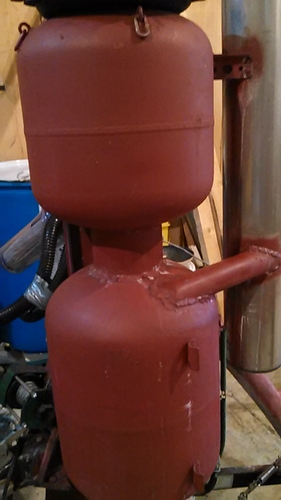OK, last one Oil Bath Filtering
Chris, I’m sorry if this way of adding stuff is clunky, I just wanted a place to store filter info that I bump into on DOW.
Any suggestions?
OK, last one Oil Bath Filtering
Chris, I’m sorry if this way of adding stuff is clunky, I just wanted a place to store filter info that I bump into on DOW.
Any suggestions?
Bruce, this is a great idea.
Let me throw in my 2c.
As for charcoal gasifiers, by far, the towel sack filter worked best for me. Its self cleaning, works is moist enviroment (unlike paper) and extracts ~99%+ of soot. And, its cheap.
As for woodgas, things get tricky. I tryed everything from hay to scrubers, hot filters, wet filtrarion, sack filters… but nothing satisfyed me enough. Ofcorse, the best way to go is by reheating the gas and passing trugh a paperfilter like Max recomends, but that takes lots of space.
I did get limited sucsess with the sack filter thugh. The problem is gas moisture. I didnt extract hopper juices so all the water from wood ended rinsing the soot out of the sack material. Now l plan to extract hopper juices, will see if the gas is dry enough dor this to work.
Ray keeps digging up old stuff:grinning: I’ve tried a lot of different filters and different mediums but have placed them aside as too complex or overkill. in my mind, the cyclone is very important since it removes the heaviest dust. Since you are using high quality engine char, there is no tar issue so don’t even worry about that, Therefore, all you have to do is remove some fine dust that gets past the cyclone. Here are some photos of a filter I use on my smaller gasifier. The plastic bucket is 6 gallons and has a Gemma screw on lid. The filter is a standard water filter you can buy for a few bucks and comes in different micron sizes. It is a press fit into the 4" PVC pipe cap and easy to remove and wash. You can put a wool sock around it if you want additional filtering, You can also put a foam rubber disk at the bottom of the filter to catch any dust that comes in the filter inlet which is at the bottom of the bucket. Heck you can even dispense with the water filter and just fill the filter bucket with wood shavings or grass clippings. It is a pretty simple system that does not rust out. Just a tip of the hat to Jeff who gave me the idea of heating the area of the plastic bucket where the 1.5" PVC pipe goes through. This creates an air tight seal and is easy to do, Like him, I do not glue the fittings on the pipe either.
Gary in PA
Gary, your simple, clever designs have made gasification accessible far and wide. I love this!
I know you said, “the cyclone is very important,” but what if making a cyclone was a barrier for someone or you needed to throw a gasifier together in a hurry? How long do you guess your filter setup (sock over water filter cartridge) would go between clean-outs with wood shavings in the bottom and no cyclone on a 5 HP engine?
Hi bruce,
I agree with you, Gary’s idea’s are inspiring and indeed making gasification accessible for all. Thumbs up Gary…
Dough i “never” use a cyclone, making one , or at least something similar functional, only requires a elbow pipe on the place you insert in the bucket and let the gas stream swirl…
As i have some allergy against long maintenance intervals, i choose to refresh filters and charcoal before every run, with the exception of the “big” sets on the tuk tuk and Pickup, those where cleaned when there was need…
In case of dust, any settle chamber or swirl effect will improve the gas quality and or the maintenance intervals.
Your idea does sounds nice, keep us posted if its running…
Hi Koen,
In my experience, fresh loads of charcoal do start and run better than running on leftovers. Matching reactor and filter to the required load and duration for a daily clean out is a good idea.
I don’t have my new reactor and filter built yet. A friend gave me some 10" ID insulated stove pipe in stainless steel that I want to use for the reactor body.
It finally turned cold here, so my projects are slowing down.
Wow this is a question i was going to ask about just the other day but was too busy working on something to sit down and type about it ,and here you are now talking about it now .
I have like i guess most of us have a fairly large container for the charcoal so we get a decent length of run time , well last weekend i put together a 55 gallon drum simple fire for a friend , i have used a vertical 25mm tube into the centre of a ss dog dish and then covered it in refractory material , after a couple of days i did the first run , within 20 seconds …the time it took for me to get up off my knees and walk over to the flare tube with my gas torch i had one of the best roaring flares and another 1 min later it was attached to the larger of my inverter generators and running as good as anything , ran it for about 4 hours under a 2KW load and then shut down for the day .
Next run i opened up the lid and checked the level and topped back up to the top and relight the gasifier , but this time it took around 2 mins to get a flare going , and this flare was not the roaring flare of the first time , and the same with the 3rd time i ran it, and after every run i had refilled with fresh charcoal , i only ever had to top up the drum around 8 to 10 inches and so there was always a lot of the older charcoal left underneath , and every run since the first i notice that the gas is getting weaker, now it takes the generator maybe 10 mins to settle down to be able to put out over the 2KW mark .
I think Koens tall but fairly small dia tubes are a better way to go for smaller engines with a run time of about 1 hour and fresher charcoal with every refill , my smaller tank units run better than this big one i made ,once the charcoal is used .
Dave
This is also what “Aleksandr” says
Thierry
Dave, Thierry,
Is there any other reason for a narrow vessel to perform better other than that a greater portion of the the fuel will be freshly added?
There is a tool used for aerating compost piles that consists of wings that fold against a shaft/handle for easy penetration into the pile. When the shaft/handle is pulled out, the wings flip out and tear apart the compacted compost. I’m wondering if this tool could be pushed down through the charcoal bed to touch the nozzle then pulled out. Perhaps this would supply some freshly broken charcoal surfaces for better startup? There is also a screw version. See both below.


I never used a large producer but keeping the reactor consistent was the idea behind separating the reactor char from the fuel magazine. No idea if this would solve the too big of a producer problem

This what I see going on here with the big hopper and not using a fresh load of charcoal on every start up. First most of these gasifier are pulling the gas up though the charcoal feed hopper and this is changing the charcoal, with fine ash dust and the charcoal is also absorbing other gases, that whats charcoal does, it is a sponge being so Prose in It’s structure. When everything cools down it is still there in the charcoal and it locks in. Contaminated charcoal is now what you have for your next start up and it gets worse as you continue to operate.
This is why I have decided to go a different route in my charcoal gasifier, side draft design on one and on my simple fire it will be down draft. Both will always have fresh charcoal feeding the nozzle and the reduction will be burned up into ashes. Also you will be able to run them on lower hopper levels before filling the hopper again.
I do not have the equipment to do the testing but I think my observation of what I have seen in what everyone has been experiencing is correct. If someone would like they could do a lab test on the charcoal before and after to see what is in the charcoal vs. the contaminated charcoal.
Bob
Dave, what you saw is a common phenomenom with charcoal. This effect is seen best by those who make their own charcoal for blackpowder. The wood type is important yes, but moreso, the temperature at wich the wood is retorted. If cooked too hot, black powder speed will fall.
The reason is, in contrairy to common belive,“fast”, reactive charcoal is not just pure carbon and mineral ash. I dont remember exactly but l think the rough molar ratio of formula is somewhere in the neighbourhood of C16H5O. Lots of hydrogen. Now, that is FRESH charcoal. Once it has been exposed to extreme heats and oxigen in the burning zone, all the hydrogen and oxigen evaporate, leaveing just pure carbon (chemicaly graphite) at cooldown. Graphite is much harder to ignite.
I saw a interasting chart once, showing ignition temp of charcoal cooked for longer times at lower times has a ignition temperature at about 350c. The high temp cooked charcoal ignites at 600c.
Thanks Kristijan for the explanations what is happening in the reduction or heat zone lobe area. Cleaning this area out before a start up would really help on the performance of the gasifier. The clean out box below my nozzle on my simple fire should work great in solving this problem that occurs in charcoal gasifiers.
Now I just have finish this gasifier project up, one of my no weld indoors winter jobs to do.
Bob
Kristijan wrote, " just pure carbon (chemicaly graphite) at cooldown"
I thought the charcoal might have gotten wet if any steam were left during cool down. Here is a flare I got one time when the fuel container had “old” charcoal from a previous run or two, where I just added a small amount of charcoal into the hopper.
you’ll need to turn the fire up for that.
First dissolved gas then steam.
Hi Kristijan,
Almost perfect answered but no sigar 
It does depend the temperature yes but however more important the volatiles present in the charcoal.
A certain mix from organic compounds left as volatiles in the charcoal wil react chemically with the carbon content and the external added other chemicals ( not to be named but generally known)
So far as black powdergoes…
To the main topic of charcoal re igniting after being used:
Moister is the main reason. Even with well cooked charcoal. When the engine runs at higher load or the gasifier has a higher load, some combustion gasses will pass the reduction zone co2 % will increase so will moister from the combusted H2.
It is a turbulent going on “down there” in the belly off hell.
My best advice to getting known with the issue is using a blower at different speeds to observe the flare color.
If the color changes towards red, then that is most likely moister/ Co2 increasing.
But even then, when all runs perfect, the shutting down of the gasifier and subsequently cooling down, wil also form moister in the gasifier.
I love the different sugestions made here on DOW, in my case i avoid to restart without a daily total refill/ cleanout.
As a simple fire is intended.
Ok koen, if moisture in the feed stock is the problem, then it is not going to matter if it is up,down, or side draft in the gasifier. The H2O is going to rise because of heat and the charcoal is going to absorb the water vapor as it cools.
So when starting up the gasifier the next day, adding a water drip or steam for more H2 production is not what you should do, because there is already H2O in the charcoal. Or does the moisture rise moving up into the feed stock in the hopper after start up, if that is the case then hopper mono rails on the out side of the hopper with fins for condensation will help just like in a WK hopper collecting the water minus the tar because it has been already remove by retorting of the wood or bamboo in your case.
@glgilmore, Gary adds oil to his mix for more power with the exhaust to control the heat. You also control with exhaust, like many others. So if your charcoal has moisture in it, it should be just a matter of the right temperature at the nozzle and into the hot lobe of hell where they say “The Thermo-magical Takes Place” and moving on into the cooler charcoal where the gases are converted over to useable gases.
Bob
Bubbles are steam. Yes, the fire would need to heat the water to 2000C before it would start to crack into hydrogen and oxygen.
So, maybe high temp “pure carbon” charcoal is making gasifiers harder to restart or moisture or dust/ashes or “other gases.” I’m interested in the “pure carbon” idea, but I have used high temperature (electrically conductive) charcoal in my gasifiers with no problem getting good gas very quickly. I have sometimes noticed a lot of steam at the flare when trying to restart. In the past, I have assumed that the restart problem was ash coated charcoal. I’m surprised that we have not come across this issue in the old literature. Wait, I just remembered something in the Kalle gasifier document.
I found it:
“Apart from the reoccuring event of taking out the slag, the car was nice for long drives. But it was also my opinion that it ought to be possible to improve its accessibility. In other words: make it start easier and faster from cold condition or after a longer pause in the driving. What more precisely gave me the impulse of this possibility was that when the gasifier was freshly de-slagged and serviced, thus new fresh charcoals were in place in front of the nozzle, the car started significantly faster, maybe in just 5 minutes rather than the normal 10–15 minutes for a car that has cooled down. So I begun studying the reasons for this. The explanation was simple. The fresher, ash-free and cleaner surfaces were more reactive. I also found out that the size of the fuel were of great importance; particularly if the smaller charcoals had clean (new) fractures; a certain amount of moisture also appeared to be beneficial.”
Like using a water drip, moisture is beneficial because hydrogen is released when the hungry glowing charcoal reacts with the oxygen in water. Although the reaction temperature is high, it is still far too low to actually crack water if carbon was not present.
“Almost perfect answered but no sigar”
Perhaps a cigarette then 
Bruce, l think Ray was thinking of the bubbles that produce before the boiling point. Those are disolved gases, mostly oxigen. Its the “air” that fish breath 
Good memory on the Kalle gasifier!
Its interasting we newer touched this topic before.